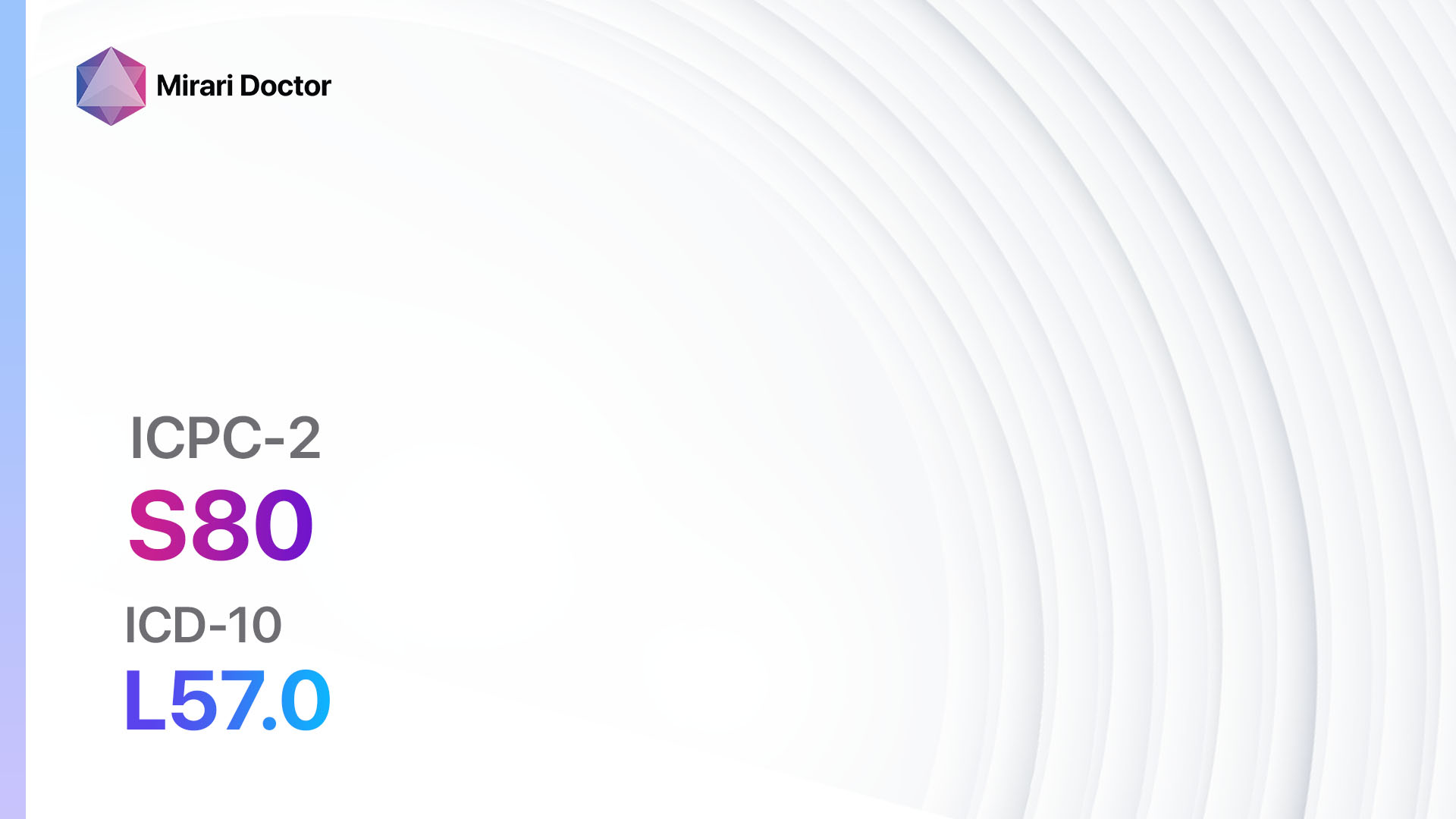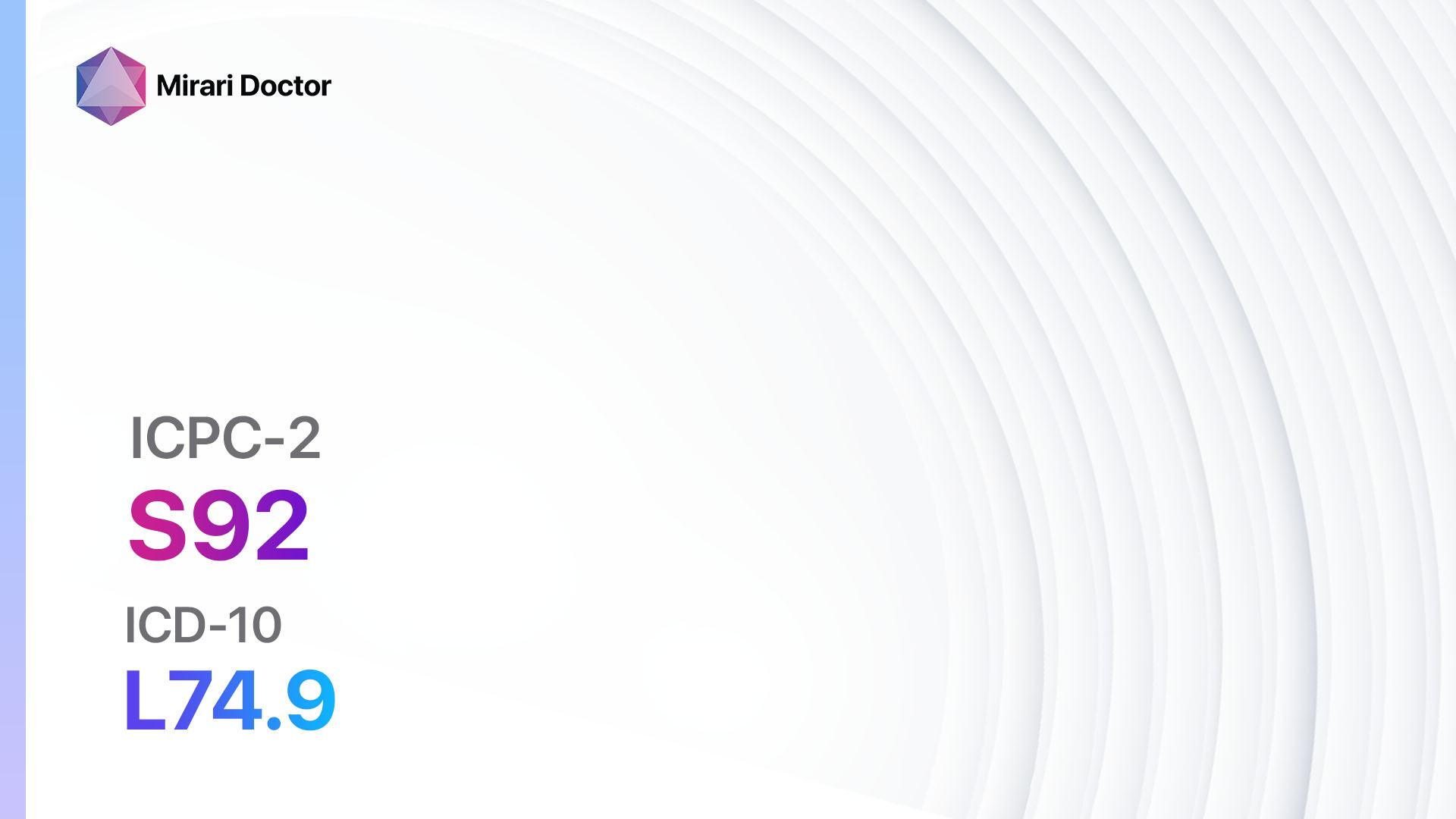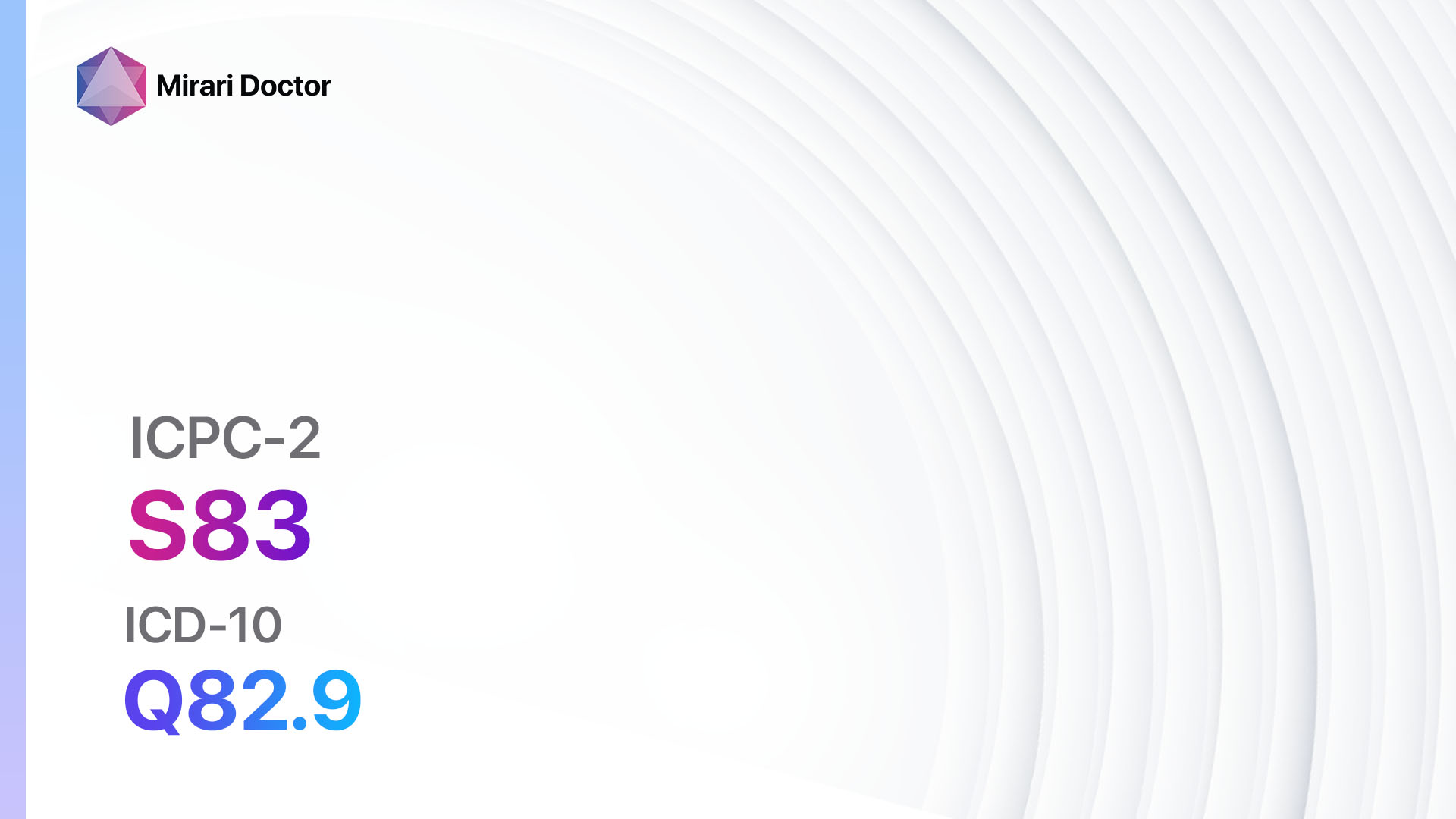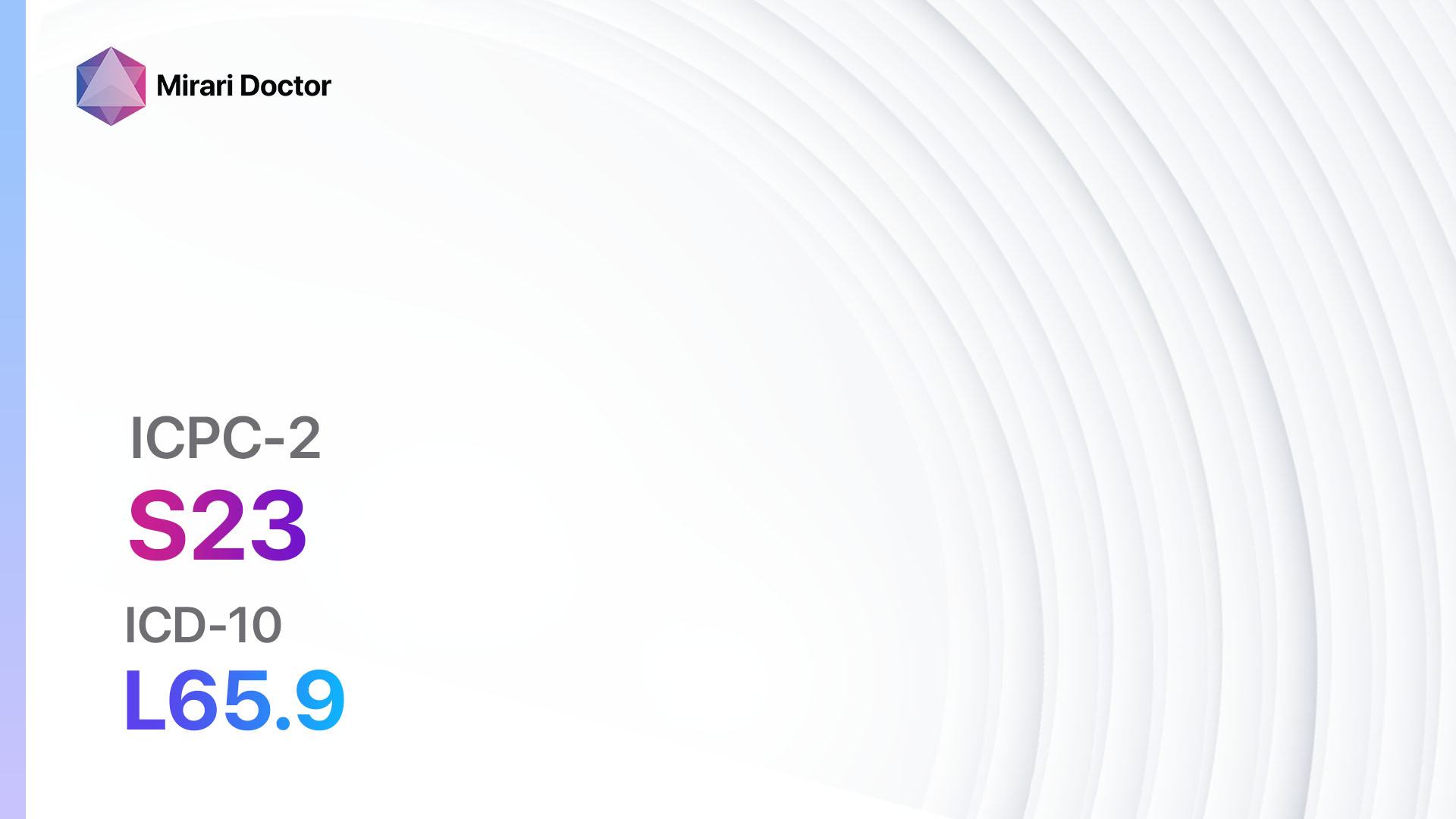
Introduction
Lipoma is a benign tumor composed of fat cells that typically develops just below the skin. It is a common condition that usually presents as a soft, painless lump[1]. The aim of this guide is to provide healthcare professionals with a comprehensive clinical procedural guide for the diagnosis and management of lipoma.
Codes
Symptoms
- Soft, rubbery lump under the skin
- Easily movable when touched
- Usually painless, but can cause discomfort if it presses on nerves or blood vessels
- Slow-growing and may increase in size over time[4]
Causes
- The exact cause of lipoma is unknown
- Genetic factors may play a role in its development
- Lipomas can occur at any age, but they are more common in middle-aged adults[5]
Diagnostic Steps
Medical History
- Gather information about the patient’s symptoms, including the size, location, and duration of the lipoma
- Ask about any changes in the lipoma, such as rapid growth or pain
- Inquire about any family history of lipomas or other similar conditions[6]
Physical Examination
- Perform a thorough physical examination to locate and assess the lipoma
- Determine the size, shape, and consistency of the lipoma
- Assess the mobility of the lipoma and check for any signs of inflammation or infection[7]
Determine Severity
- Classify the lipoma based on severity and depth, if applicable
- Superficial lipomas are located just below the skin, while deep lipomas are situated deeper within the body
- Determine if the lipoma is causing any symptoms or complications, such as pain or compression of nearby structures[8]
Laboratory Tests
- No specific laboratory tests are required for the diagnosis of lipoma
- Blood tests may be performed to rule out other conditions or to assess overall health[9]
Diagnostic Imaging
- Imaging modalities, such as ultrasound or MRI, may be used to visualize and assess the lipoma
- Ultrasound can help determine the size, location, and characteristics of the lipoma
- MRI can provide detailed images of the lipoma and surrounding tissues[10]
Other Tests
- Biopsy: In some cases, a biopsy may be performed to confirm the diagnosis of lipoma or to rule out other conditions
- Fine-needle aspiration: This procedure involves using a thin needle to extract a sample of cells from the lipoma for further analysis
Follow-up and Patient Education
- Schedule regular follow-up appointments to monitor the lipoma for any changes or complications
- Educate the patient about the benign nature of lipomas and reassure them that treatment is usually not necessary unless the lipoma causes symptoms or concerns
Possible Interventions
Traditional Interventions
Medications:
Top 5 drugs for Lipoma:
- Observation and monitoring:
- Cost: No additional cost.
- Contraindications: None.
- Side effects: None.
- Severe side effects: None.
- Drug interactions: None.
- Warning: None.
- Surgical excision:
- Cost: $500-$2,000.
- Contraindications: None.
- Side effects: Pain, bleeding, infection.
- Severe side effects: Rare, but may include nerve damage or scarring.
- Drug interactions: None.
- Warning: Surgical excision may leave a visible scar.
- Liposuction:
- Cost: $1,500-$5,000.
- Contraindications: None.
- Side effects: Pain, bruising, swelling.
- Severe side effects: Rare, but may include infection or contour irregularities.
- Drug interactions: None.
- Warning: Liposuction may not completely remove the lipoma and may require multiple sessions.
- Steroid injections:
- Cost: $100-$500 per injection.
- Contraindications: None.
- Side effects: Pain, swelling, skin discoloration.
- Severe side effects: Rare, but may include infection or allergic reactions.
- Drug interactions: None.
- Warning: Multiple injections may be required for optimal results.
- Radiofrequency ablation:
- Cost: $1,000-$3,000.
- Contraindications: None.
- Side effects: Pain, swelling, blistering.
- Severe side effects: Rare, but may include infection or scarring.
- Drug interactions: None.
- Warning: Radiofrequency ablation may not be suitable for large or deep lipomas.
Surgical Procedures:
- Excisional biopsy: Surgical removal of the entire lipoma for diagnostic purposes. Cost: $500-$2,000.
- Incisional biopsy: Surgical removal of a portion of the lipoma for diagnostic purposes. Cost: $500-$2,000.
Alternative Interventions
- Observation and monitoring: If the lipoma is small, painless, and not causing any symptoms, it may be reasonable to observe and monitor the lipoma without intervention. Cost: No additional cost.
- Herbal remedies: Some herbal remedies, such as chickweed, turmeric, or thuja, may be used topically to reduce the size or discomfort of the lipoma. Cost: Varies depending on the specific remedy.
- Lifestyle modifications: Maintaining a healthy weight and engaging in regular exercise may help prevent the development of new lipomas. Cost: No additional cost.
- Homeopathic treatments: Homeopathic remedies, such as Calcarea carbonica or Silicea, may be used to treat lipomas. Cost: Varies depending on the specific remedy.
- Acupuncture: Acupuncture may help reduce pain and inflammation associated with lipomas. Cost: $60-$120 per session.
Lifestyle Interventions
- Weight management: Maintaining a healthy weight can help prevent the development of new lipomas. Cost: No additional cost.
- Regular exercise: Engaging in regular physical activity can improve overall health and may help reduce the risk of lipoma development. Cost: No additional cost.
- Healthy diet: Consuming a balanced diet rich in fruits, vegetables, and lean proteins can support overall health and may help prevent lipoma formation. Cost: Varies depending on dietary choices.
- Stress management: Practicing stress-reducing techniques, such as meditation or yoga, may help prevent lipoma development. Cost: No additional cost.
- Avoidance of trauma: Protecting the body from trauma or injury can help reduce the risk of lipoma formation. Cost: No additional cost.
It is important to note that the cost ranges provided are approximate and may vary depending on the location and availability of the interventions.
Mirari Cold Plasma Alternative Intervention
Understanding Mirari Cold Plasma
- Safe and Non-Invasive Treatment: Mirari Cold Plasma is a safe and non-invasive treatment option for various skin conditions. It does not require incisions, minimizing the risk of scarring, bleeding, or tissue damage.
- Efficient Extraction of Foreign Bodies: Mirari Cold Plasma facilitates the removal of foreign bodies from the skin by degrading and dissociating organic matter, allowing easier access and extraction.
- Pain Reduction and Comfort: Mirari Cold Plasma has a local analgesic effect, providing pain relief during the treatment, making it more comfortable for the patient.
- Reduced Risk of Infection: Mirari Cold Plasma has antimicrobial properties, effectively killing bacteria and reducing the risk of infection.
- Accelerated Healing and Minimal Scarring: Mirari Cold Plasma stimulates wound healing and tissue regeneration, reducing healing time and minimizing the formation of scars.
Mirari Cold Plasma Prescription
Video instructions for using Mirari Cold Plasma Device – S78 Lipoma (ICD-10:D17.9)
| Mild | Moderate | Severe |
| Mode setting: 1 (Infection) Location: 0 (Localized) Morning: 15 minutes, Evening: 15 minutes |
Mode setting: 1 (Infection) Location: 0 (Localized) Morning: 30 minutes, Lunch: 30 minutes, Evening: 30 minutes |
Mode setting: 1 (Infection) Location: 0 (Localized) Morning: 30 minutes, Lunch: 30 minutes, Evening: 30 minutes |
| Mode setting: 2 (Wound Healing) Location: 0 (Localized) Morning: 15 minutes, Evening: 15 minutes |
Mode setting: 2 (Wound Healing) Location: 0 (Localized) Morning: 30 minutes, Lunch: 30 minutes, Evening: 30 minutes |
Mode setting: 2 (Wound Healing) Location: 0 (Localized) Morning: 30 minutes, Lunch: 30 minutes, Evening: 30 minutes |
| Mode setting: 10 (Dermatitis/Fungus) Location: 0 (Localized) Morning: 15 minutes, Evening: 15 minutes |
Mode setting: 10 (Dermatitis/Fungus) Location: 0 (Localized) Morning: 30 minutes, Lunch: 30 minutes, Evening: 30 minutes |
Mode setting: 10 (Dermatitis/Fungus) Location: 0 (Localized) Morning: 30 minutes, Lunch: 30 minutes, Evening: 30 minutes |
| Mode setting: 7 (Immunotherapy) Location: 1 (Sacrum) Morning: 15 minutes, Evening: 15 minutes |
Mode setting: 7 (Immunotherapy) Location: 1 (Sacrum) Morning: 30 minutes, Lunch: 30 minutes, Evening: 30 minutes |
Mode setting: 7 (Immunotherapy) Location: 1 (Sacrum) Morning: 30 minutes, Lunch: 30 minutes, Evening: 30 minutes |
| Total Morning: 60 minutes approx. $10 USD, Evening: 60 minutes approx. $10 USD |
Total Morning: 120 minutes approx. $20 USD, Lunch: 120 minutes approx. $20 USD, Evening: 120 minutes approx. $20 USD, |
Total Morning: 120 minutes approx. $20 USD, Lunch: 120 minutes approx. $20 USD, Evening: 120 minutes approx. $20 USD, |
| Usual treatment for 7-60 days approx. $140 USD – $1200 USD | Usual treatment for 6-8 weeks approx. $2,520 USD – $3,360 USD |
Usual treatment for 3-6 months approx. $5,400 USD – $10,800 USD
|
 |
|
Use the Mirari Cold Plasma device to treat Lipoma effectively.
WARNING: MIRARI COLD PLASMA IS DESIGNED FOR THE HUMAN BODY WITHOUT ANY ARTIFICIAL OR THIRD PARTY PRODUCTS. USE OF OTHER PRODUCTS IN COMBINATION WITH MIRARI COLD PLASMA MAY CAUSE UNPREDICTABLE EFFECTS, HARM OR INJURY. PLEASE CONSULT A MEDICAL PROFESSIONAL BEFORE COMBINING ANY OTHER PRODUCTS WITH USE OF MIRARI.
Step 1: Cleanse the Skin
- Start by cleaning the affected area of the skin with a gentle cleanser or mild soap and water. Gently pat the area dry with a clean towel.
Step 2: Prepare the Mirari Cold Plasma device
- Ensure that the Mirari Cold Plasma device is fully charged or has fresh batteries as per the manufacturer’s instructions. Make sure the device is clean and in good working condition.
- Switch on the Mirari device using the power button or by following the specific instructions provided with the device.
- Some Mirari devices may have adjustable settings for intensity or treatment duration. Follow the manufacturer’s instructions to select the appropriate settings based on your needs and the recommended guidelines.
Step 3: Apply the Device
- Place the Mirari device in direct contact with the affected area of the skin. Gently glide or hold the device over the skin surface, ensuring even coverage of the area experiencing.
- Slowly move the Mirari device in a circular motion or follow a specific pattern as indicated in the user manual. This helps ensure thorough treatment coverage.
Step 4: Monitor and Assess:
- Keep track of your progress and evaluate the effectiveness of the Mirari device in managing your Lipoma. If you have any concerns or notice any adverse reactions, consult with your health care professional.
Note
This guide is for informational purposes only and should not replace the advice of a medical professional. Always consult with your healthcare provider or a qualified medical professional for personal advice, diagnosis, or treatment. Do not solely rely on the information presented here for decisions about your health. Use of this information is at your own risk. The authors of this guide, nor any associated entities or platforms, are not responsible for any potential adverse effects or outcomes based on the content.
Mirari Cold Plasma System Disclaimer
- Purpose: The Mirari Cold Plasma System is a Class 2 medical device designed for use by trained healthcare professionals. It is registered for use in Thailand and Vietnam. It is not intended for use outside of these locations.
- Informational Use: The content and information provided with the device are for educational and informational purposes only. They are not a substitute for professional medical advice or care.
- Variable Outcomes: While the device is approved for specific uses, individual outcomes can differ. We do not assert or guarantee specific medical outcomes.
- Consultation: Prior to utilizing the device or making decisions based on its content, it is essential to consult with a Certified Mirari Tele-Therapist and your medical healthcare provider regarding specific protocols.
- Liability: By using this device, users are acknowledging and accepting all potential risks. Neither the manufacturer nor the distributor will be held accountable for any adverse reactions, injuries, or damages stemming from its use.
- Geographical Availability: This device has received approval for designated purposes by the Thai and Vietnam FDA. As of now, outside of Thailand and Vietnam, the Mirari Cold Plasma System is not available for purchase or use.
References
- Charifa A, Badri T. Lipomas, Pathology. In: StatPearls. Treasure Island (FL): StatPearls Publishing; 2023.
- World Organization of Family Doctors (WONCA). International Classification of Primary Care, 2nd edition (ICPC-2).
- World Health Organization. International Statistical Classification of Diseases and Related Health Problems 10th Revision (ICD-10)-WHO Version for 2019.
- Salam GA. Lipoma excision. Am Fam Physician. 2002;65(5):901-904.
- Sandberg LJ. Lipomas: Genetics and pathophysiology. In: UpToDate, Post TW (Ed), UpToDate, Waltham, MA, 2023.
- Kolb L, Yarrarapu SNS, Ameer MA, et al. Lipoma. In: StatPearls. Treasure Island (FL): StatPearls Publishing; 2023.
- Murphey MD, Carroll JF, Flemming DJ, et al. From the archives of the AFIP: benign musculoskeletal lipomatous lesions. Radiographics. 2004;24(5):1433-1466.
- Fletcher CDM, Bridge JA, Hogendoorn PCW, Mertens F. WHO Classification of Tumours of Soft Tissue and Bone. 4th ed. Lyon, France: IARC Press; 2013.
- Johnson CN, Ha AS, Chen E, Davidson D. Lipomatous Soft-tissue Tumors. J Am Acad Orthop Surg. 2018;26(22):779-788.
- Kransdorf MJ, Bancroft LW, Peterson JJ, et al. Imaging of fatty tumors: distinction of lipoma and well-differentiated liposarcoma. Radiology. 2002;224(1):99-104.
Related articles
Made in USA




























